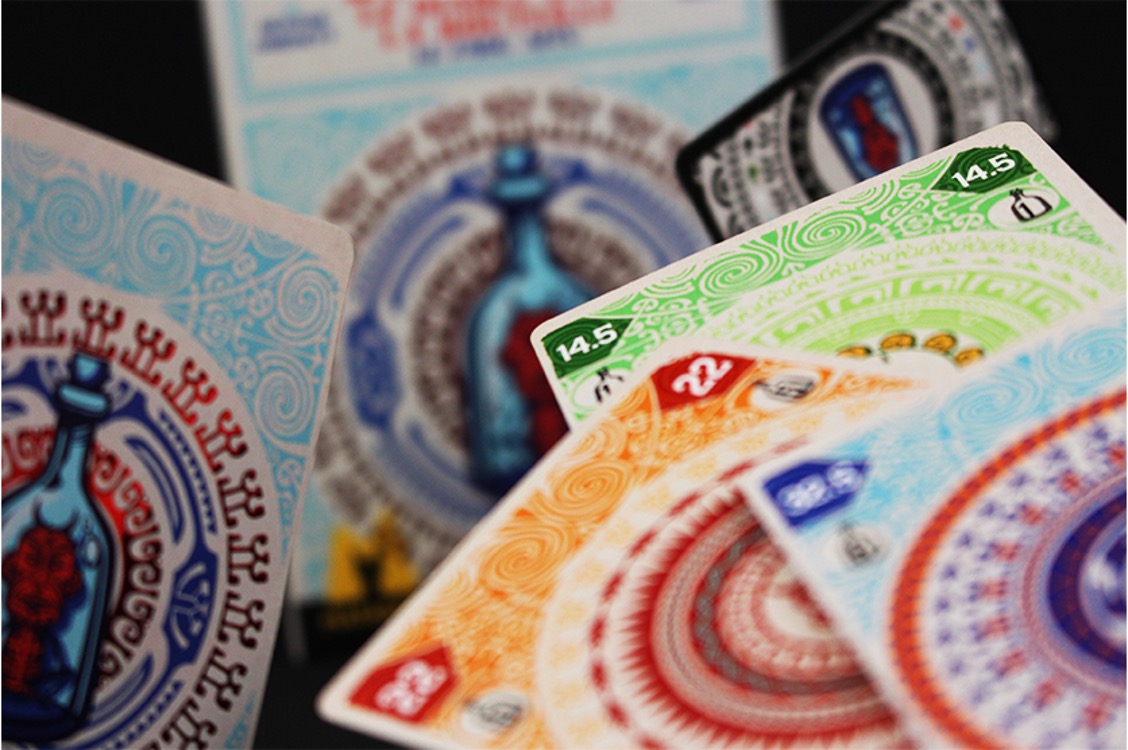
Bottle Imp Returns in a brand new edition
There's no denying of the trick-taking mania that has taken hold of the boardgaming sphere.
With it, many new titles are being published, each striving to push the boundaries of innovation in a crowded genre. One major upside to such a trend: it gives exposure to gems from the past, some of which possess qualities that make them, even by today's standards, excellent games. What's more, they often benefit from new visuals, and sometimes new modes and improved rules.
That's exactly what publishers Matagot and Grail Games did with their new edition of Bottle Imp, the renowned trick-taking game from Günter Cornett. This title joins Matagot's trick-taking games collection, composed of staples of the genre such as Tatsu and St. Patrick (and Cat in the Box in the french market).

This new edition, while retaining the core gameplay experience of the title, adds a 5 to 6 player mode to the classic 2-4 player configurations of Bottle Imp, as well as revamping all the art and components. The game also features a new team mode for 4 to 6 players.
Realised under the artistic direction of Maxime Erceau (Tatsu, Orion Duel , Kyoto no Neko), this new edition features illustrations by Maxime Morin, a prominent artist with an impressive porfolio of games (Faraway, Next Station Tokyo, Next Station London, Codex Naturalis...). The box includes 54 foil effect cards and 2 glass bottles, as well as player aids and french and english rulebooks.
Designer Günter Cornett commented, "The idea to implement a 5 to 6 player version in Bottle Imp resulted in an exciting game, thanks to intensive plays with a group of hooked testers. I'm really happy with all the changes we've made to this game, and I thank Matagot for bringing me back to game design."

About Bottle Imp
Inspired by the famous novel by Robert Louis Stevenson, The Bottle Imp was originaly created in 1995, and has been published worlwide by about ten companies since. While it is based on points, acquired by winning tricks, The Bottle Imp works in a way that ensures that the highest card does not always take the trick. Player have the possibility to win tricks (and gain the devil's bottle) by playing the highest valued card that still fits under the price of the bottle. This value becomes the new price of the bottle, and as the price undercuts during the game, the bottle will change hands. Whoever ends up with the bottle at the end of the game receives minus points instead of positive points.







